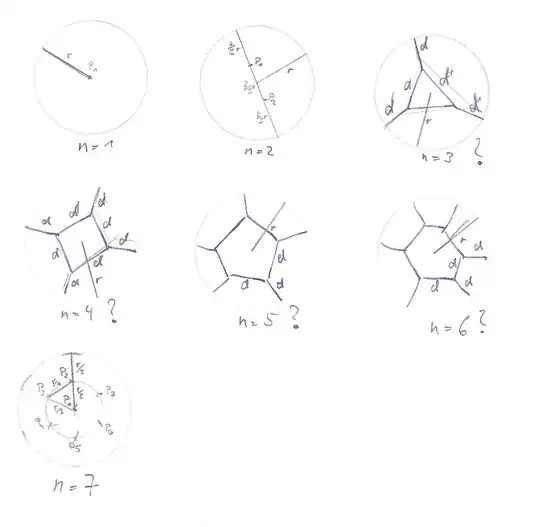There is a finite, circular area $A=\pi \times r^2$ with a given radius $r$ and a variable number of points $P_n$ ($n \in \mathbb{N}_{>0}$) that are to be placed inside of this area.
What is the distance $d$ to the closest dots when placing them in a way to maximise this closest distence while also placing them at minimum the same distance $d$ to the edge of the area?
This is distinct from this and similar problems by trying to also maximise the distance between the edge and points and the points at the same time while also using $n$ points instead of 2.
For $n=1$ the obvious solution is $d=r$ while $P_1$ is also the center of the circle.
For $n=2$ I get a distance of $d= r \frac{2}{3} $ from the simple geometry: They have to be on the opposite sides of the center of the circle, so they are both on a line of $ 2 \times r$, which they divide into 3 areas of equal length.
For $n=3$ to $n=6$ I lack a good formula, but I think the solution might be to place them on polygons with a number of corners equal to $n$.
For $n=7$ I found, that one of the points has to end up in the center of the circle, while the other 6 form a hexagon around it, that should have a side length of $d=\frac{r}{2}$. I derived this from experimental drawings, using a set of 7 circles of $R=\frac{r}{2}$ that have their centers always on the edge of 3 others
Is there any formula for the needed distance $d$ for any $n \in \mathbb{N}$? For clarification a sketch:
